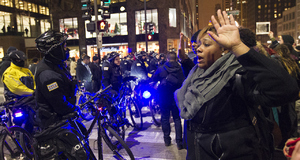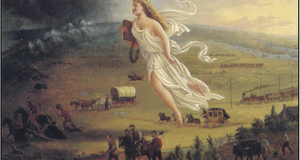Featured Article:Begging for Change: A Comparative Analysis of How the Media Frames Domestic and International PovertyResults and DiscussionAfter cleaning up the data set, frequency tables were run on all the recoded variables in order to identify relevant trends within the research. The first nominal variable examined in this project was ‘Location’. This variable is of utmost importance to the study because it records the core difference being analyzed in the research: whether the article is about domestic or international poverty. In running a frequency table, I found that 73%, 57 articles were about international poverty as compared to the 27%, 21 articles on domestic poverty (Table 1). Without even analyzing the actual content of the articles themselves, the sheer difference in quantity of coverage between the two is vast. To start, coverage of poverty as a whole is rare. With just over 26,500 articles archived from January 2010 to January 2011, only 78 of these articles significantly addressed the issue of poverty at .002%. Of this already very miniscule percent, articles on international poverty were almost 3 times more common than articles on domestic poverty. In this, poverty is framed as a much more prevalent problem outside of our country’s borders. By hardly covering the issue, the media re-enforces the middle-class mindset of most the country, turning a blind eye to the extreme marginalization within United States society. It, in essence, becomes very easy for the public to not be aware of, or refuse to acknowledge, the problems happening in their own backyard. This will instead lead the majority to focus their attention on the poverty of the ‘other’. As we recognize the important role that public opinion plays in the creation of policy, it seems that policy will much more likely be geared towards international poverty and foreign aid as opposed to addressing problems in domestic poverty. The next nominal variable pertaining to general location examined was ‘Region’. This variable was recoded into eight different values including North America, Asia, Africa, Middle East, Caribbean, South America, Europe and Oceania. For the purpose of this research I included the North African countries such as Libya, Egypt and Algeria in the Middle East region. Historically, this distinction between Northern Africa and the rest of Africa is based off of the barrier created by the Sahara desert, which led to significant differences in culture and development. Early on in history, this barrier facilitated a strong Islamic influence which classifies it as a part of the Arab World, and therefore, for my study, as part of the Middle East. The region with the most coverage was North America at 29%, 22 articles.This region was weighted however, because all domestic articles were about North America as compared to the International articles, which were split between six regions. Following North America, Asia (mostly India) had the most coverage at 26%, 20 articles, followed by Africa and the Middle East, both at 14%, 11 articles, Europe at 10%, 8 articles and the last two variables, South America and the Caribbean only making up 7%, 5 articles combined (Table 2). There was no coverage of poverty in the Oceania region, which included Australia, New Zealand, Melanesia, Micronesia and Polynesia. In the media, images are tools that can be used to elicit specific emotional reactions. They can be quickly internalized, and have a lasting impression on consumers. They play a large role in framing one’s understanding of the reality of a topic (Davis). Majority of the articles, 99%, 76 articles (Table 3), were accompanied by an image. Of these images, 36%, 28 images, were in an urban setting, followed by 26%, 20 images in a rural setting, 22%, 17 images in a wealthier indoor setting and 4%, 3 images in a poorer indoor setting. Another 13%, 10 images took place in an ‘Other’ setting (Table 4). As well, of those 76 images, people were the focus in 62, 81% of them. The next variables analyzed were ‘Age’, ‘Race’ and ‘Gender’. It is important to analyze the differences in these demographic variables within sociological studies because of the different roles and expectations they represent and hold in society. Though the age groups used for coding were fairly broad (<18, 18-64, >64), none of the images gave the actual ages of the people depicted. The three broad age groups were simply used to distinguish between children, adults and the elderly. Within age, 67%, 41 images were of a person/people between the ages of 18 and 64. Following this, 18%, 11 images were of at least two people who fell into multiple age groups. Next, 12%, 7 images were of a person/people under the age of 18 and 3%, 2 images were of a person/people over the age of 64 (Table 6). My data aligned with previous literature, showing that the elderly were severely under represented in the media, almost to the point of invisibility. However, my study presented different findings regarding the representation of children. Previous literature states that though children make up a disproportionately large percentage of those in poverty, this disproportion was exaggerated by the media (Clawson and Tryce 2000: 59). I did not find this to be the case however, with an overwhelming majority of those represented being adults at 67%. Next, the variable ‘Race’ showed that the most common race represented in images was Asian at 34%, 21 images. This finding is positively correlated with Asia being the most common international region being addressed in articles about poverty. Following this, blacks were depicted in 26%, 16 of the images, and whites in 18%, 11 of the images. Next, Middle Easterners were depicted in 10%, 6 of the articles and Hispanics in 5%, 3 of the images. In 8%, 5 of the images, multiple races were depicted in the same setting (Table 7). Finally, within the variable ‘Sex’, there were 47%, 30 images of just males at 47% and 19%, 12 images of just females. Following this 30%, 19 of the images displayed both males and females and in 5%, 3 of the images a person’s gender was undeterminable because of factors such as distance from the subject (Table 8). The subsequent pertinent variable analyzed was whether a solution for eradicating, aiding or minimizing poverty was given. Examples of solutions given included coverage of initiatives taken by individuals or businesses to do their part in minimizing poverty, such as a non-profit who builds and gives laptop computers to poor families in Africa with the goal of giving them resources for academic success, as well as keeping those in poverty relatively technologically savvy. Solutions also included suggestions written by the journalist pertaining to governmental or individual strides that could, or should, be taken. Only 27%, 21 articles suggested any solution for the matter as compared to the 73%, 57 articles that did not offer any solution (Table 14). As previously recognized, poverty is an invasive problem that plays some role in majority of the lives of the world’s population. The small number of solutions recognized or offered, both on the micro or macro level, speaks to the minimal amount of progress that has been made in addressing the problems posed by poverty across the globe. After running all of these primary frequency tables, cross tabulations and chi square tests were run on all the variables to see which Dependent Variables were statistically correlated with the Independent Variable, ‘Location’ (international or domestic). The following variables proved to be statistically correlated with ‘Location’: EconGovt_R, PeopleFocus_R, Setting_R, SolutionGiven_R, TypePerson_R, and Class_R. The closer the value was to .000, the stronger the correlation. The first correlation examined was between EconGovt_R and Location_R. The Chi-square test showed that there was a very strong correlation between the variables, with a value of .001 (Table 17). Domestic articles, 8 articles at 38%, were significantly more likely to focus on a grander governmental budget or economic problems rather than the actual people being affected, as compared to articles on international poverty at 7%, 4 articles. In both categories however, majority did not focus on these governmental budget and economic problems at 62%, 13 articles and 93%, 53 articles respectively (Table 16). Different explanations may be employed to better understand why this was the case. First, when writing about multifaceted issues occurring within the United States, it is easier to delve deeper into the complexities of the government because the media is able to assume that their consumers understand their own government structure to at least some extent. Whatever the reason for doing this however, more commonly framing domestic poverty as a larger economic and government problem deflects the attention away from those inflicted by poverty. This leaves potential for the perceived middle class of America to think solely of themselves as the victims of a currently faltering economic system, rather than considering the lives of those living below the poverty line. The Chi-square test examining PeopleFocus_R and Location_R showed a moderate correlation, exhibited by a .042 value (Table 19). Images accompanying international articles were more likely to depict people as the main focus of the picture at 86%, 49 images. This was compared to 65%, 13 images attached with domestic articles (Table 18). Previously acknowledging the influence that images have on media consumers, one can conclude that the way poverty is depicted has the power to construct a person’s perception of its reality. In this, as images accompanying articles on domestic poverty were less likely than articles on international poverty to have people as their focus, the media is, in essence, dehumanizing the face of domestic poverty. By diminishing the recognition of the afflicted people, the public is more easily able to divert their attention from the issue going on in their own backyard, focusing on the bad economy and budget rather than those who are most impacted by it. A very significant correlation was found between Setting_R and Location_R at a value of .000 (Table 21). The numbers in the cross tabulation showed that images for articles on international poverty were far more likely to be in a rural setting at 33%, 19 images, compared to 5%, 1 image for articles on domestic poverty. Between an urban and rural setting however, both images in articles on domestic and international poverty were more likely to be in an urban setting at 29%, 6 images and 39%, 22 images respectively. Aside from these numbers however, 29%, 6 images were located in wealthier indoor settings in domestic articles as compared to 0% being within poorer indoor settings. For international articles, 19%, 11 images were in wealthier indoor settings and 5%, 3 images were in poorer indoor settings (Table 20). Though a large portion of the nation’s poverty is concentrated in urban settings, there are many people in poverty in the United States who reside in more rural areas. As well, large differences between the typical races of people residing in these respective locations can be noted. Just as rural poverty settings were under-represented by the media coverage of domestic poverty, so were whites. Much of those in poverty who live in more rural areas are thought to be white, so these disparities in coverage align. Urban settings, however, were more frequently represented, just as were black people. Many associate inner-city poverty with people of minority races. So, by over representing urban poverty in media images, the media is further framing domestic poverty as a problem faced primarily by blacks, and others of a minority race. Next, the correlation between TypePerson_R and Location_R. This Chi-square test showed that that there was a very weak correlation between the two variables, with a value of .085 (Table 24). Images for articles on international poverty were 35% more likely to depict the impoverished themselves at 64%, 32 images as compared to 29%, 4 images for articles on domestic poverty. 20%, 10 images associated with international articles depicted a politician compared to 29%, 4 images accompanying domestic articles. Majority, 36%, 5 images with articles on domestic poverty depicted someone not falling into the three main categories: impoverished, politician and aid/helper. 7%, 1 image for domestic poverty depicted an aid/helper compared to 4%, 2 images for international poverty (Table 23). The disparity between who was depicted in images associated with international poverty compared to domestic poverty coverage lends itself, once more, to a dehumanizing affect. Sociologist Anthony Giddens theorized that human faces in any form, whether person-to-person or in print, serve as an “access point to abstract systems,” (Cody). As articles on domestic poverty rarely display the impoverished themselves, the general public’s ability to imagine or conceptualize the faces of domestic poverty will be hindered. In this, the public is more easily able to denounce its presence in the United States, and avoid feeling compelled to become more directly involved in minimizing its existence, or to care about the ways in which it is addressed in policy. Comparatively however, because human faces have been proven to enlist more feelings of relation, and lead to a recognition of a population, the United States public will be more likely to support policy geared towards offering foreign aid to poverty. A weak correlation was found between Location_R and the last variable examined, Class_R, with a value of .060 (Table 26). In this, images related to international poverty were much more likely to depict people in the lower class at 60%, 30 images compared to the 23%, 3 images related to domestic poverty that depicted the same thing. Images with articles on domestic poverty were more likely to depict the upper class at 54%, 7 images compared to 28%, 14 images attached to articles on international poverty (Table 25). A layered crosstab, which is a statistical analysis run on greater than two variables, was run to determine which races were being framed as which types of people by the media. It was necessary to run this analysis as a layered crosstab between Race_R, TypePerson_R and Location_R so that the key Independent Variable for the whole study could be incorporated into the table as well. Between all of the published images, no white people were shown as impoverished either domestically or internationally. Domestically, 3 images, 75%, of all portrayed impoverished individuals were black, and 25%, 1 image represented multiple races. Internationally however, 18 images, 64% showed Asian individuals as the impoverished, followed by Africa at 8 images, 29%, and Hispanic and multiple races were represented in one image a piece, at 4% each. Of the politicians depicted, 3 domestic politicians were white at 75% and 1, 25% were black. Internationally, 4 politicians, 40% were black, 30%, 3 were white, 20%, 2 were Hispanic and in one image, at 10%, politicians of multiple races were depicted. Finally, only one aid/helper was depicted in an article on domestic poverty, and this individual was white. Internationally, 1, 50% was white and the other 50% was black (Table 27). In regards to these representations of race, my data aligned with previous literature. Other studies have found that while blacks make up less than one third of the United States poor, national surveys report that the public substantially overestimates the percentage of blacks among the poor at around fifty to sixty percent (Gilens,1996: 516-517). My research found that 75% of the impoverished depicted in domestic articles were black, and one image depicted multiple races. Conversely, in my study, the majority of those depicted in power, such as politicians, were white.Continued on Next Page » Suggested Reading from Inquiries Journal
Inquiries Journal provides undergraduate and graduate students around the world a platform for the wide dissemination of academic work over a range of core disciplines. Representing the work of students from hundreds of institutions around the globe, Inquiries Journal's large database of academic articles is completely free. Learn more | Blog | Submit Latest in Sociology |


















